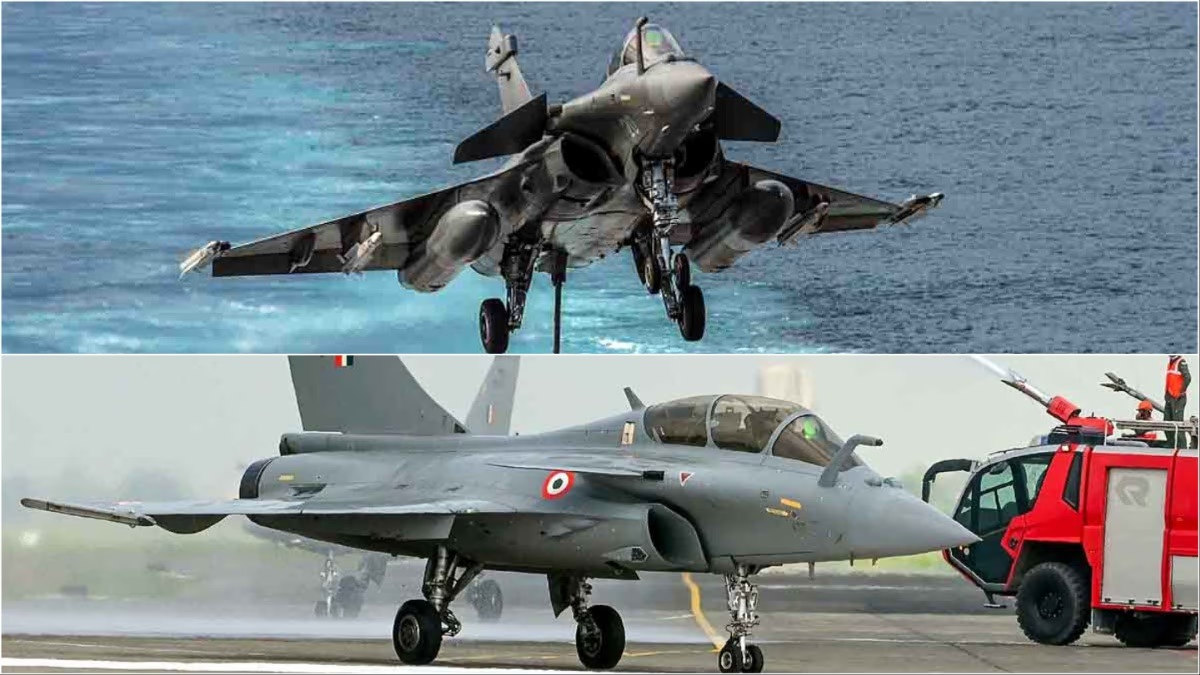The primary differences between the Rafale-Marine and Air Force Rafale lie in their operational environments and mission profiles. The Rafale-M has been specially crafted for maritime engagements on aircraft carriers, while the Air Force's Rafale is land-operated, focusing on aerial and tactical missions. These differences make the Rafale Marine an indispensable asset for the Indian Navy's maritime strategy, significantly bolstering India's strength in the Indian Ocean.
Landing Gear and Airframe
Rafale Marine:
For takeoff and landing on the limited decks of aircraft carriers like INS Vikrant and INS Vikramaditya, the Rafale-M features robust, specially-designed landing gear. Its airframe is modified to withstand the saline and moist maritime conditions.
Air Force Rafale:
Designed for typical runway operations, the Air Force Rafale has lighter landing gear and an airframe, making it unsuitable for maritime operations.
Folding Wings
Rafale Marine:
Designed with space constraints on carriers in mind, the Rafale-M comes with foldable wings, allowing for convenient storage on deck space.
Air Force Rafale:
There is no provision for folding wings as this jet operates at airports where space isn't limited.
Weight
Rafale Marine:
The Rafale-M is slightly heavier than the Air Force Rafale due to additional modifications for naval operations, such as reinforced landing gear and anti-corrosion coatings.
Air Force Rafale:
It is lighter as it is not engineered for the specific needs of marine operations.
Short Takeoff and Landing (STOL)
Rafale Marine:
Enhanced STOL capabilities allow the Rafale-M to operate from the smaller decks of carriers, integrating catapult-assisted takeoff and arrester hook systems.
Air Force Rafale:
Designed for standard runway operations, it lacks systems like catapults or arrester hooks.
Mission Profile
Rafale Marine:
Optimized explicitly for naval warfare, this jet handles anti-ship warfare, maritime surveillance, and long-range sea assaults using missiles like the Exocet.
Air Force Rafale:
Primarily engineered for air-to-air and air-to-ground missions like striking enemy bases, air defense, and strategic bombings.
Corrosion Protection
Rafale Marine:
Uses special coatings and materials to protect against corrosion caused by the salt and moisture of the maritime environment.
Air Force Rafale:
Does not require such coatings, as it mainly operates from ground-based airfields.
Weapons and Sensors Configuration
Rafale Marine:
Equipped with specialized weapons for naval missions, like Exocet missiles, and features sensors for maritime surveillance.
Air Force Rafale:
Configured for Meteor, SCALP, and other air-to-air or air-to-ground missiles suitable for typical combat scenarios.
Maintenance and Logistics
Rafale Marine:
With the Indian Air Force already operating Rafale jets, certain similarities in logistics and maintenance will ease operations. However, additional training and facilities are required for maritime operations.
Air Force Rafale:
Maintenance is conducted using infrastructure that is already established at existing airbases.




